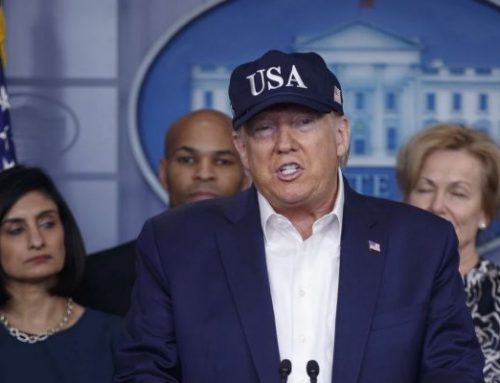A few weeks ago, former President Donald Trump, put together a lawsuit aimed at the big three social media giants – Twitter, Facebook and YouTube – claiming censorship and infringement of his First Amendment rights. In an in-depth interview, Constitutional Law expert and Fulbright Scholar at the University of Wisconsin-Madison Professor Howard Schweber argued that the lawsuit as it currently stands, has no chance of succeeding and there exist much stronger legal arguments.
Why would Trump take this specific route? Schweber argues that this fits into the Republican narrative that such social media platforms are frequently closing down conservative voices. Trump is telling the American public that he is protecting the First Amendment and asking for political donations in the process.
Not long after, President Biden expressed frustration with Facebook, accusing them of ‘killing people’ by carrying COVID-19 misinformation. Though Biden has somewhat walked back from these comments, it reflects a regular argument from the Democrats that social media platforms need to be more proactive and faster in shutting down hate speech and misinformation, and de-platforming those responsible. Though Democrats celebrated the removal of Trump from social media, their position was that it took far too long, and much damage was already done.
At the same time, House Speaker, Nancy Pelosi, moved to bar two of former President Trump’s most strident Republican defenders in Congress from joining a select committee to investigate the 6 January Capitol riots. Part of the investigation is likely to focus on the incitement by the former President and the responsibility of social media platforms to deal with such events in real-time.
Free speech and the ‘harm test’?
Like most other things in the US, the debate over free speech has become partisan: Democrats want to see more interventions by social media giants while Republicans want little (if any) policing. Interestingly, this is a reversal of free speech debates in the ‘60s and ‘70s when it was progressives who defended the right to free speech and conservatives who argued for its limitations.
In a recent article I co-wrote with University of Wyoming legal scholar, Dr Jason McConnell, we attempted to unpack the various arguments presented in limiting free speech including the decision to de-platform former president Trump.
The arguments for and against free speech centre on the first and most foundational liberal defences of free speech, John Stuart Mill’s classic 1859 text, On Liberty. Early in the text, Mill states:
“…there ought to exist the fullest liberty of professing and discussing, as a matter of ethical conviction, any doctrine, however immoral it may be considered.”
Mill warns that, if liberty of expression is limited, the price is, ‘a sort of intellectual pacification …’ that forgoes ‘… the entire moral courage of the human mind’.
Despite this position, Mill also suggests that there is a need for some rules of conduct to regulate the actions of members of a political community. The limitation he places on free expression is, in his words, the ‘very simple principle’ which has come to be referred to as the ‘harm principle’:
“… the only purpose for which power can be rightfully exercised over any member of a civilised community, against his will, is to prevent harm to others.”
How do we apply the harm principle?
While indeed a simple statement, the application of the ‘harm principle’ is much more complex. Many hours of academic research and political argument have been dedicated to understanding just how narrow limits on free speech should be applied and, what types of speech, if any, cause harm. Who can forget the passionate debates here in Australia over Section 18C of the Racial Discrimination Act?
One attempt to apply the harm principle is through the ‘purpose test.’ That is, understanding the ‘purpose’ of the speaker may assist us in assessing whether or not a speech act should be protected. The Supreme Court of the US (SCOTUS) has itself struggled with this purpose test: sometimes ignoring it and at other times making judgements on a speaker’s specific ‘purpose.’
Where SCOTUS has landed is that freedom of speech can be understood as the general rule that speech is protected from censorship, with certain notable exceptions – each with its own specific justification. SCOTUS is essentially arguing that any analysis of harm from offensive speech must be contextually determined.
In analysing this, McConnell and I argue that attempts to restrict speech on a universal basis, without careful consideration and definition of exceptions from protection, will be misguided and misdirected. In other words, a universal declaration on what is harmful risks free speech. In saying that, universal declarations that no speech harms are also inappropriate. Both the context and purpose matter.
Be careful what you wish for
Subsequent research conducted on the impact of Trump’s social media posts upon public perceptions of COVID-19 revealed a significant relationship between perceptions of the virus (hoax, seriousness, etc.) and Trump’s tweets on the matter.
Nevertheless, it was not pandemic-related tweets that triggered Trump’s de-platforming but the Capitol riots. In fact, Twitter became more aggressive towards Trump as it became clear that Biden would win the election. This raised concerns that Twitter only acted when it saw the political winds changing.
For many, the decision to de-platform Trump was long overdue. For his supporters, be they local Republican activists or a number of conservative Australian politicians, the decision by the social media organisations is a direct assault on free speech.
This concern for free speech has not been limited to Trump’s supporters, however, with Russian pro-democracy advocate, Alexei Navalny, also raising concerns as have more right-wing leaning politicians such Andres Manuel Obrador of Mexico and Mateusz Moraweicki of Poland.
Yet each of these views may be missing the greater issue: these social media platforms now shape the public sphere as they see fit with little, if any, accountability.
Trump and Biden may be political foes, but both are in their own way trying to deal with the power of private organisations who control the public sphere and can alone decide what exactly is ‘free speech.’
This article was original published at Open Forum.
Note: This article is based on an academic paper published as part of a special issue commissioned by Global Media Journal: Covideology: Mediating the significance of a pandemic.






Leave A Comment